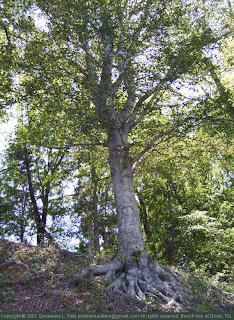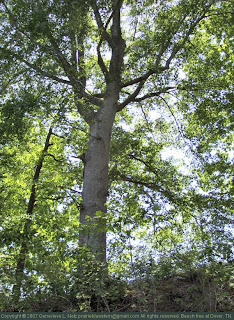A few notes about Fagus grandifolia
 |
 |
Beech trees are easily identified by their smooth, gray bark. Often the bark is not uniformly colored; it may have a splotchy gray appearance.
In a national battlefield, it is a federal crime to deface government property, but these trees have suffered a good bit of carving on their trunks.
Beech nuts are a valuable food for wildlife. The small, three-sided nut is borne in a prickly husk that splits open when the nut is ripe. The nut is enjoyed by a wide variety of birds and mammals, as well as man.
Beech trees prefer a mildly to moderately acidic soil and a fairly moist site with good drainage. They are not particularly susceptible to disease or weather damage, but they can be injured by drought, compacted soil, and chemicals that wash off streets. Young trees can be damaged by sunscald (long hours of intense sunshine.) They prefer -- and need! -- a shaded location.
Beech trees are slow-growing, but long-lived. They may live up to 300 years. I speculate that the trees in the photo are about 145 years old. It is likely that these bluffs were cleared of trees when the Confederate forces built fortifications here in 1861-62. These trees probably sprang up from roots in the ground after the site was abandoned by Union forces in 1863.

 "The power to recognize trees at a glance without examining their leaves or flowers or fruit as they are seen, for example, from the car-window during a railroad journey, can only be acquired by studying them as they grow under all possible conditions over wide areas of territory. Such an attainment may not have much practical value, but once acquired it gives to the possessor a good deal of pleasure which is denied to less fortunate travelers."
"The power to recognize trees at a glance without examining their leaves or flowers or fruit as they are seen, for example, from the car-window during a railroad journey, can only be acquired by studying them as they grow under all possible conditions over wide areas of territory. Such an attainment may not have much practical value, but once acquired it gives to the possessor a good deal of pleasure which is denied to less fortunate travelers."
0 comments -- please add yours:
Post a Comment